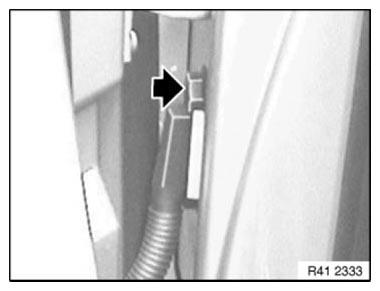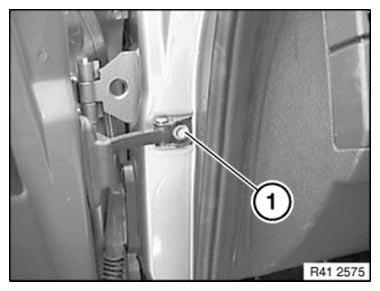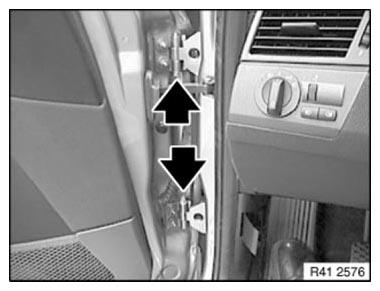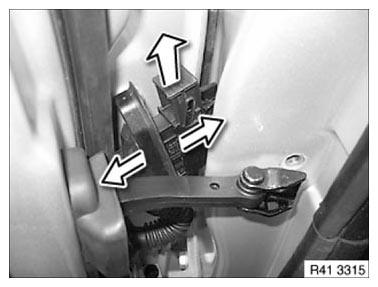BMW 7 Series: Removing And Installing Door
IMPORTANT: Do not damage adjoining body parts.
The illustrations are schematic representations and are to be applied to the
relevant vehicle type.
Open door.
Release screw on connector frame.
Front door: Tightening torque 41 51 4AZ.
Rear door: Tightening torque 41 52 4AZ.

Fig. 394: Locating Screw On Connector Frame
NOTE: Secure door against closing.
Release screw (1) on door retainer.
Front door: Tightening torque 51 21 3AZ.
Rear door:
Tightening torque 51 22 3AZ.
Open door up to stop.

Fig. 395: Identifying Screw On Door Retainer
Release screws between both hinge elements at top and bottom.
Front door: Tightening torque 41 51 1AZ.
Rear door: Tightening torque 41 52 1AZ.

Fig. 396: Locating Hinge Elements
Pull plug connection from door pillar, unlock by pulling out bar and detach.
Unhinge door by moving upwards and placing it on a suitable surface.
Installation:
If necessary, adjust DOOR.

Fig. 397: Pulling Plug Connection From Door Pillar
READ NEXT:
IMPORTANT: Do not damage adjoining body components.
Minor corrections (realignment work) are permitted if the existing adjustment
options are not sufficient.
NOTE: Observe GAP DIMENSIONS.
The door m
IMPORTANT: Do not damage adjoining body parts.
The illustrations are schematic representations and are to be applied to the
relevant vehicle type.
Open door.
Release screw on connector frame.
Fron
SEE MORE:
In the case of a partial replacement piece, a body component is cut at a
point described in the repair instructions.
A reinforcement plate is welded in to ensure sufficient strength.
Follow notes for welding steel parts.
NOTE: The following illustrations serve as general illustrations of
reinfor
ADJUSTING ACC SENSOR (FRR SENSOR)
NOTE: This document applies to the entire F series with the new ACC sensor
(FRR -
Full Range Radar).
Special tool required:
Holder 36 1 100
Active Cruise Control ACC adjusting device, complete. Order number: 81
10 0 021 292. Consisting of:
Mirror, complete





